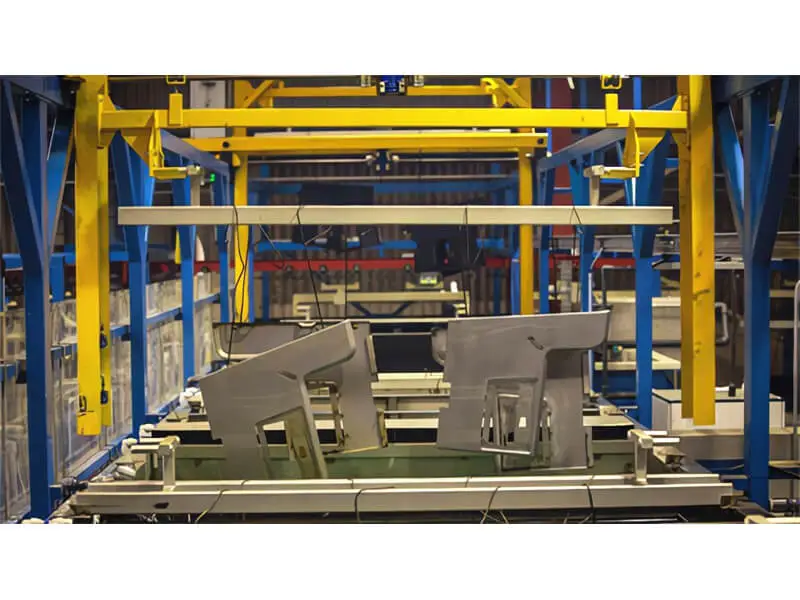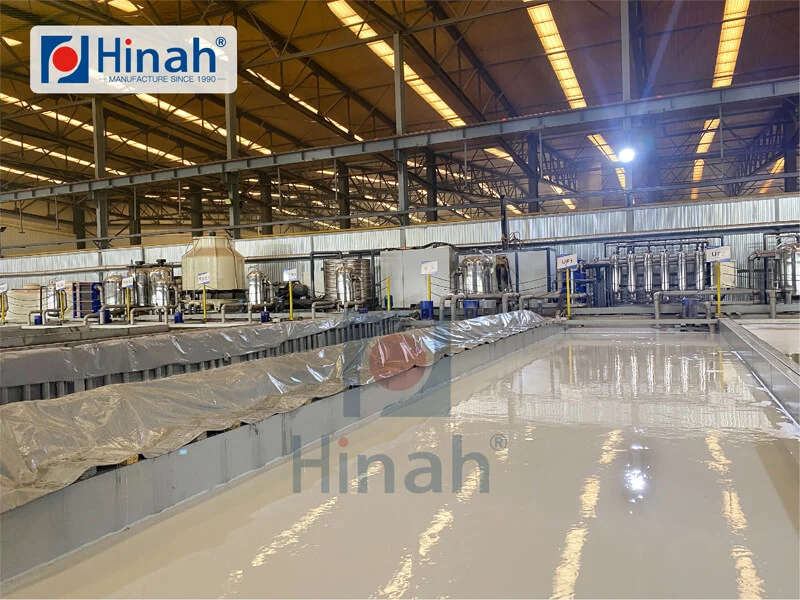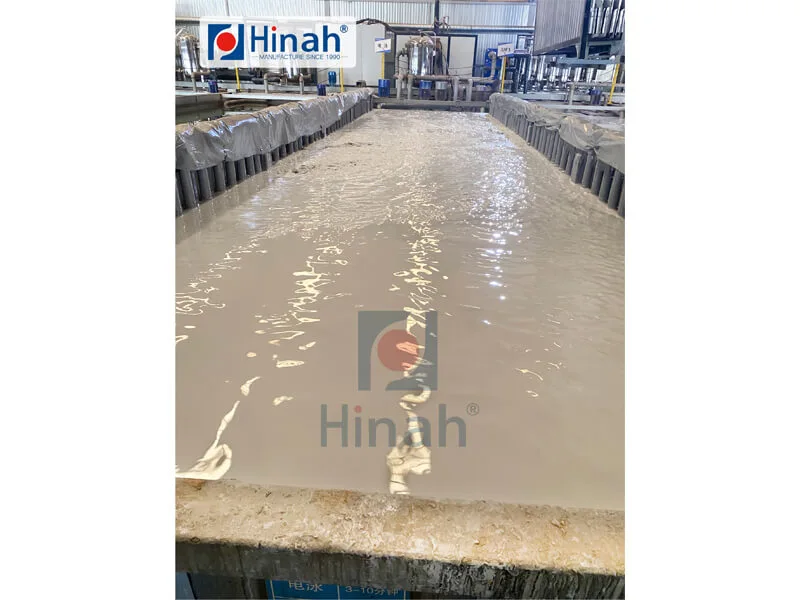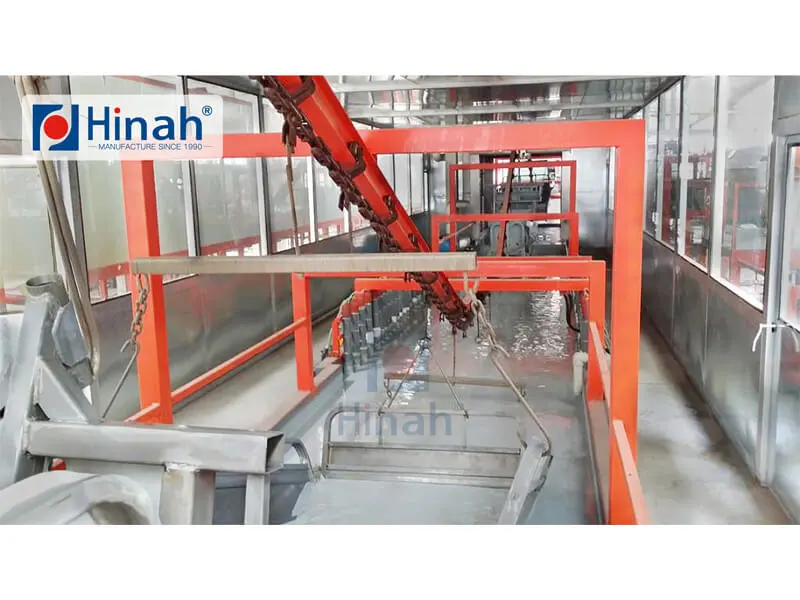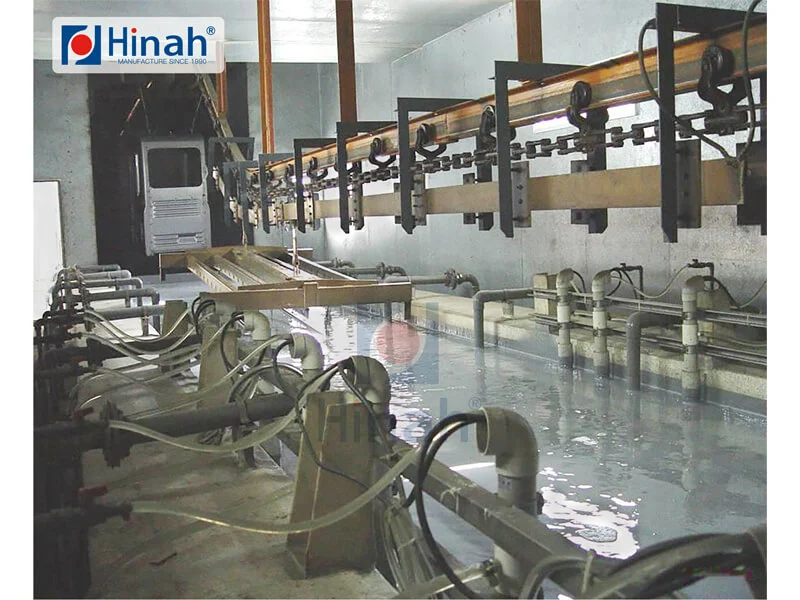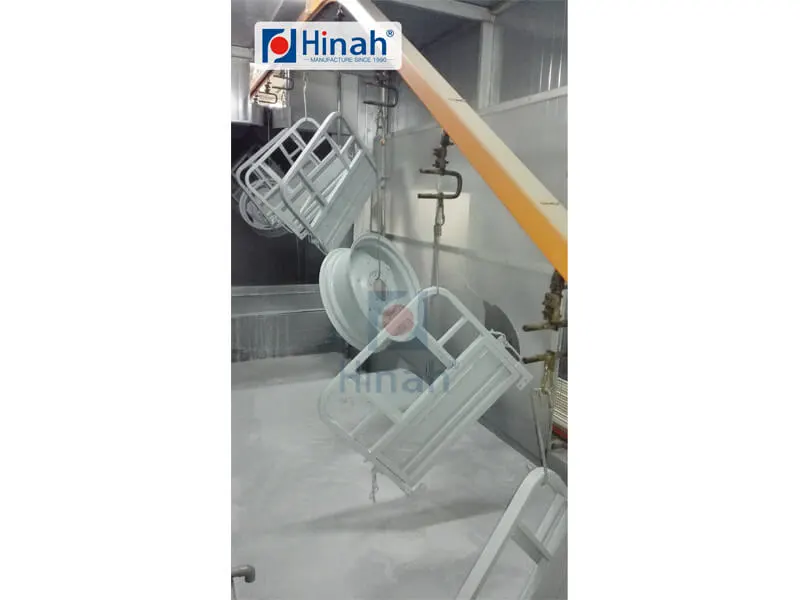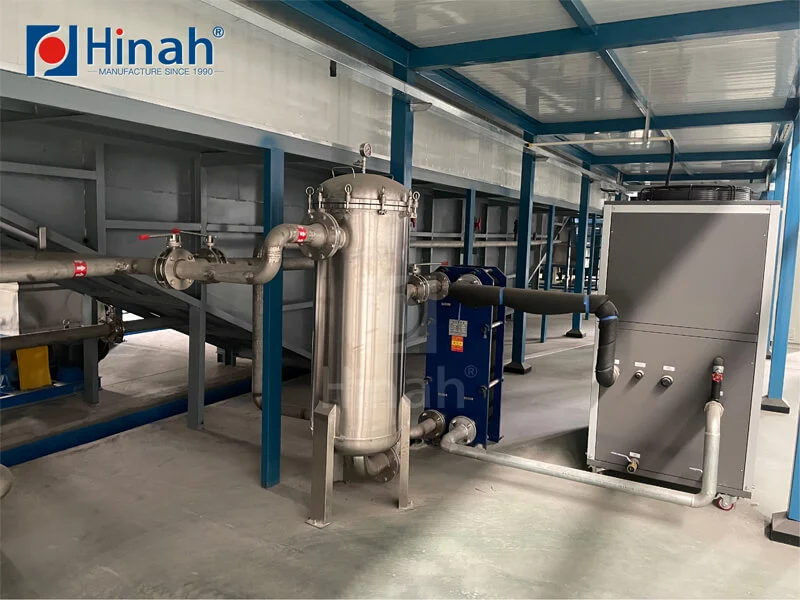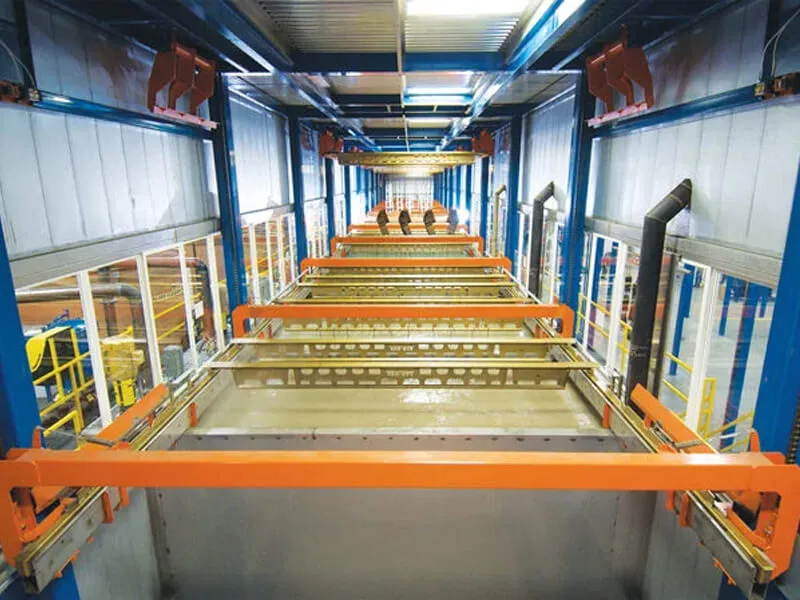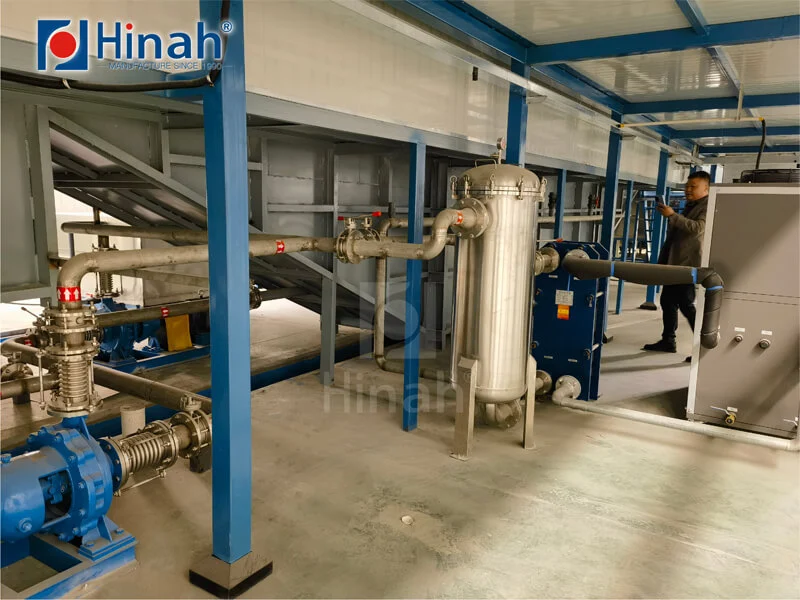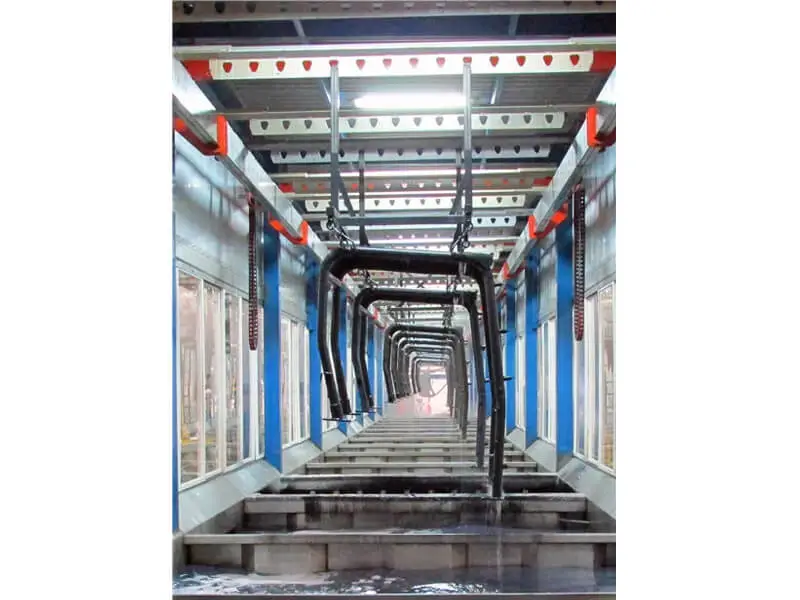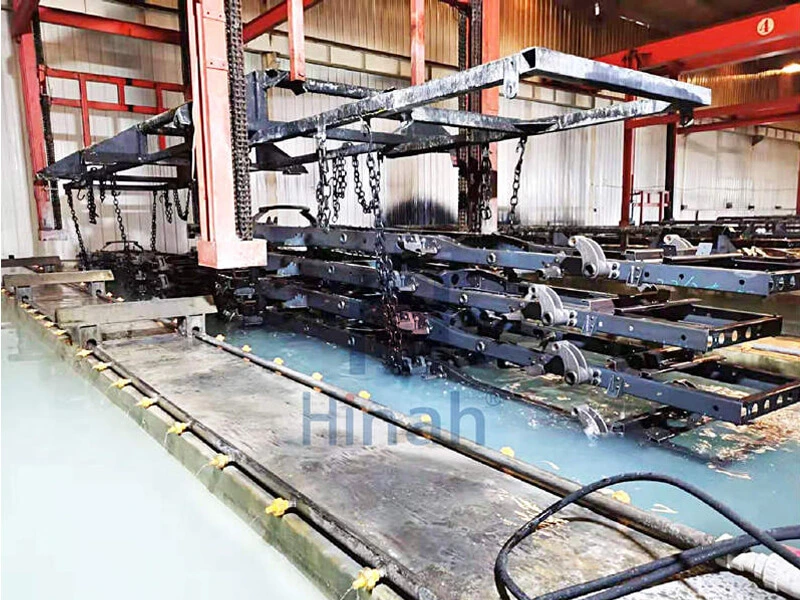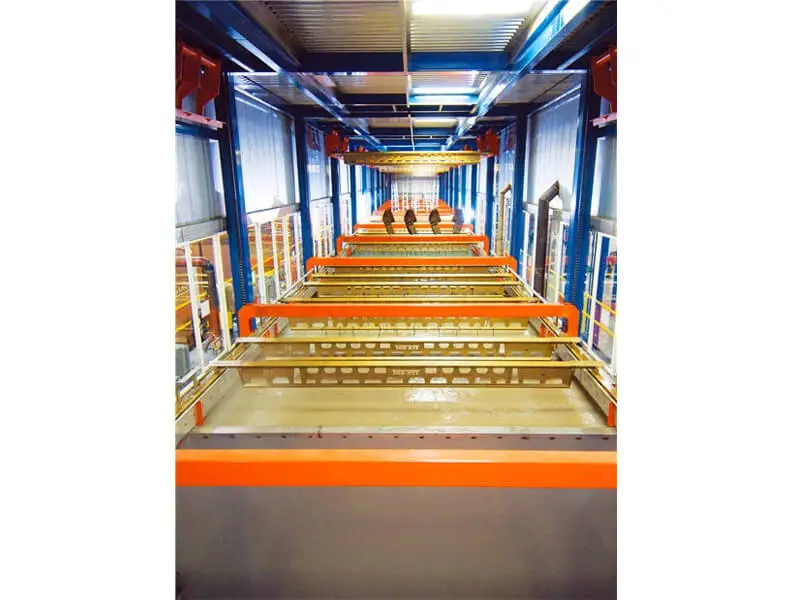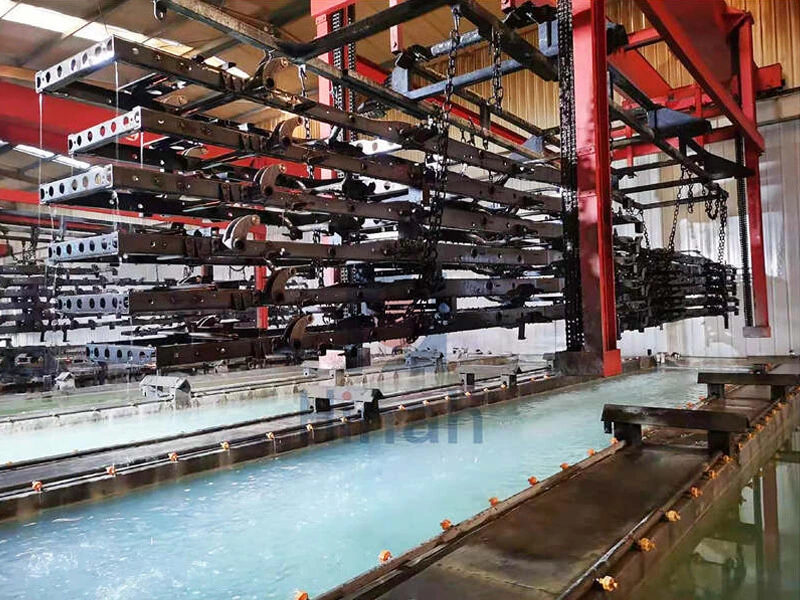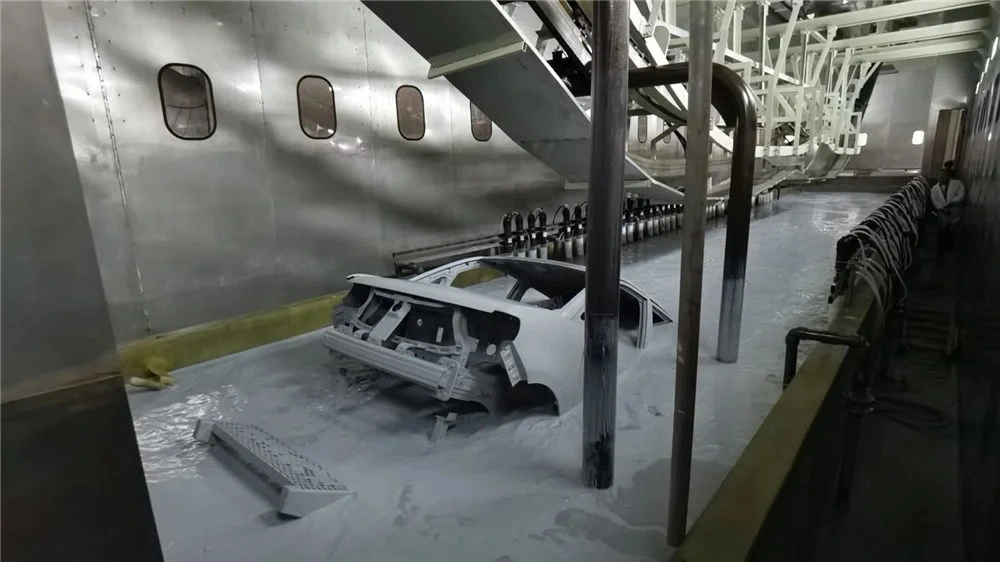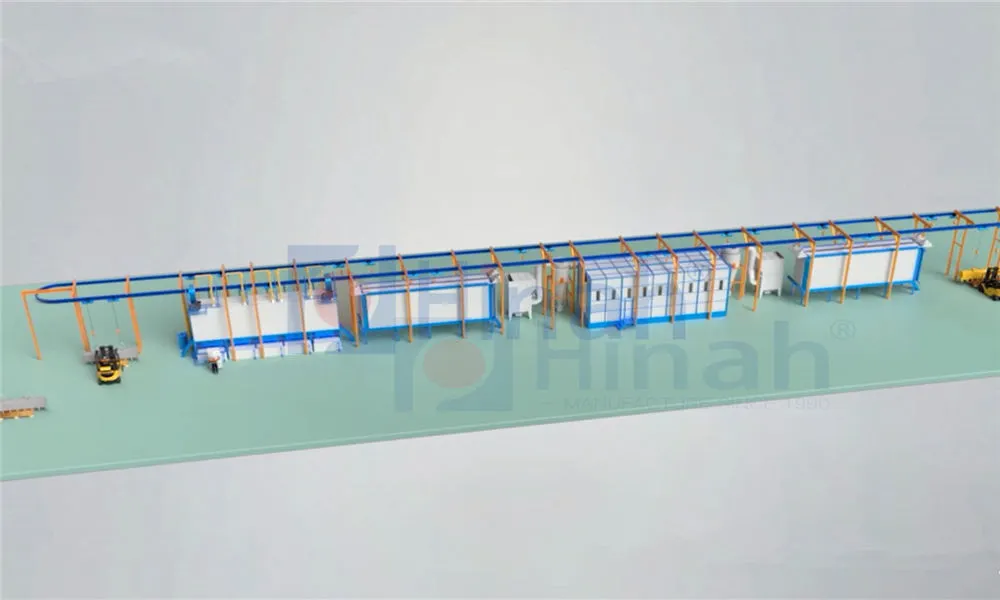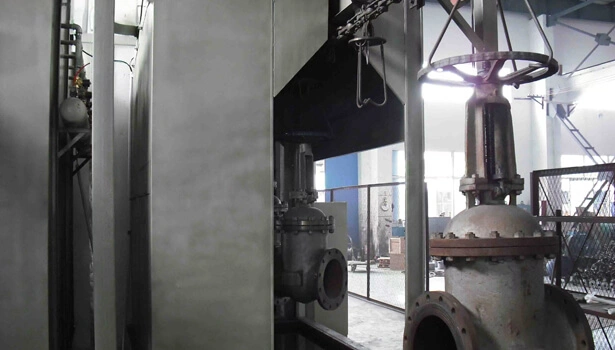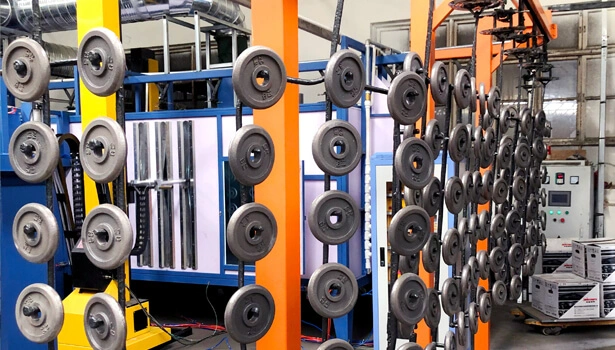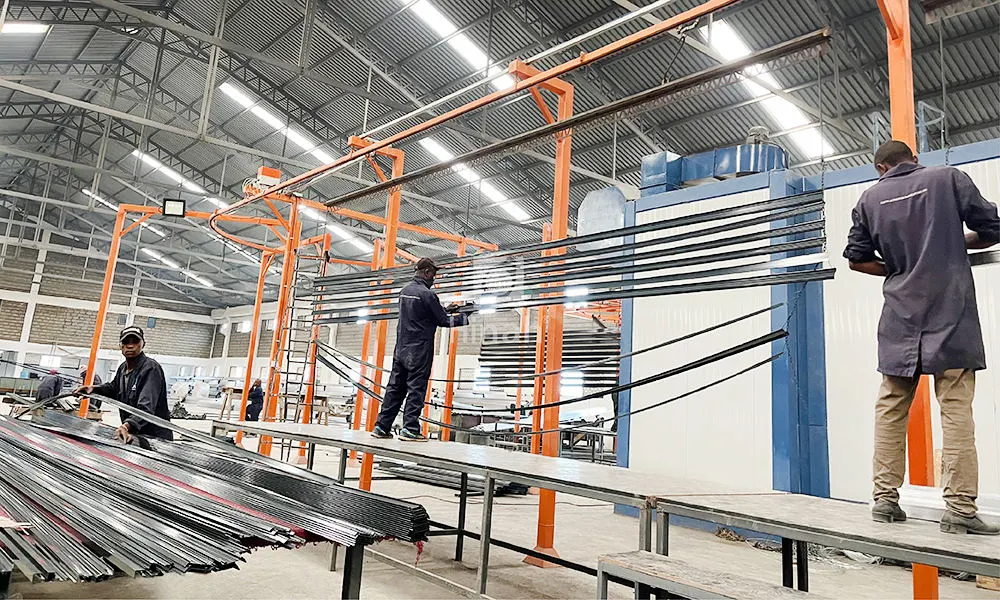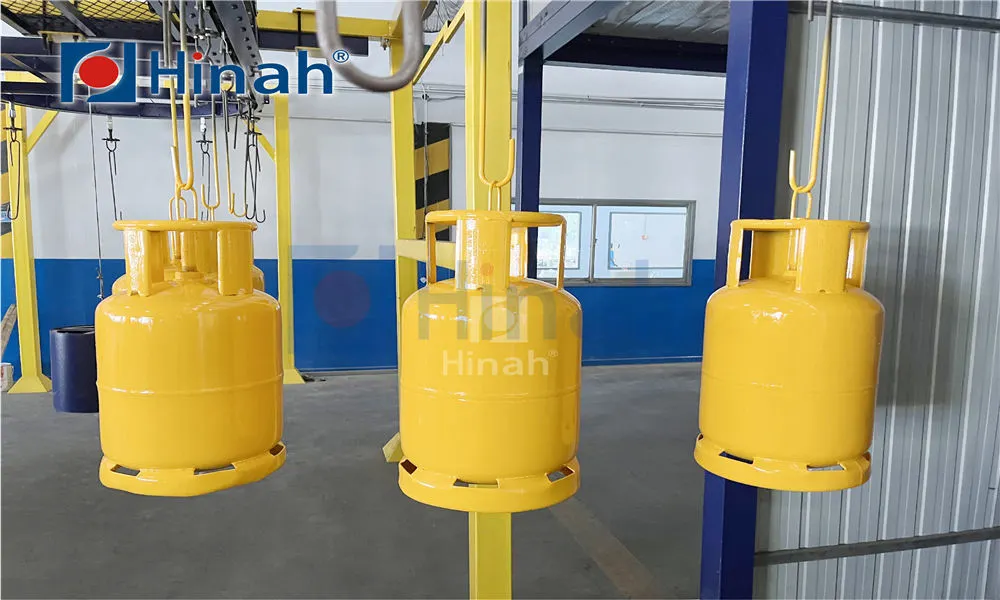The Core Process Within the Tank of E-Coat Tank
Immersion: Pre-treated (cleaned, phosphated) parts are completely submerged in the bath.
Electrification: A direct current (DC) voltage is applied between the part racks (acting as one electrode) and counter-electrodes strategically placed within the tank.
Electrodeposition: Charged paint particles migrate through the bath towards the oppositely charged part surface (anodic deposition for positively charged particles onto a negatively charged part, or cathodic deposition for negatively charged particles onto a positively charged part – cathodic is far more common for corrosion resistance).
Film Formation & Insulation: As particles deposit onto the metal, they form an initial, continuous, highly uniform film. Crucially, this deposited film acts as an electrical insulator. Once the film reaches a specific thickness (determined by voltage, time, and bath chemistry), the electrical resistance halts further deposition, ensuring exceptional control over film thickness, even on complex geometries with recesses and edges.
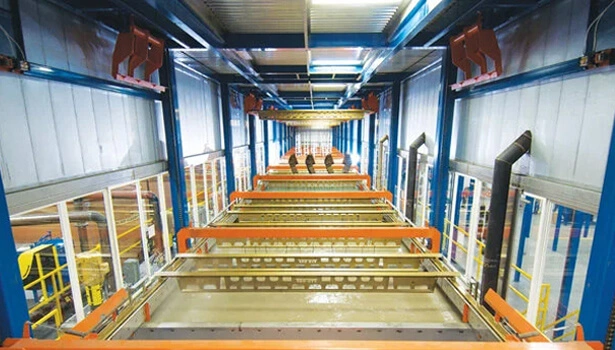
Critical Tank Systems & Components of E-Coat Tank
For the bath to function consistently and produce high-quality coatings, the E-Coat tank integrates several vital auxiliary systems:
Agitation: Powerful pumps and strategically placed nozzles ensure constant, uniform circulation of the bath. This prevents pigment settling, maintains temperature homogeneity, removes gases generated at the electrodes, and ensures consistent coating quality.
Temperature Control: Heat exchangers (using chilled water) maintain the bath within a strict, narrow temperature range (typically 80-95°F / 27-35°C), critical for controlling deposition rate, film properties, and bath stability.
Ultrafiltration (UF): Integrated UF loops continuously filter the bath, removing ionic impurities, excess solvents, and breakdown products. This maintains bath conductivity, controls contamination, and allows for "closed-loop" rinsing using permeate, minimizing paint waste and water consumption.
Electrodes: Robust anodes (for cathodic systems) or cathodes (for anodic systems), often made of stainless steel, are submerged in the tank and connected to the rectifier.
Make-up Systems: Automated systems add concentrated paint, deionized water, and other replenishing chemicals to maintain optimal bath solids, pH, and other parameters.
Ventilation: Proper ventilation manages fumes and gases (like oxygen/hydrogen from electrolysis) above the bath surface.
Why the E-Coat Tank is Vital
The design, maintenance, and precise control of the E-Coat tank and its integrated systems directly determine the success of the entire electrocoating process. A well-managed tank ensures:
Unrivaled Uniformity: Exceptionally consistent film thickness, even on complex shapes and recessed areas.
Superior Corrosion Resistance: Provides a continuous, pinhole-free primer layer, foundational for long-term protection.
High Transfer Efficiency: Nearly 100% of the deposited paint adheres to the part; overspray is minimal and recyclable via UF.
Environmental Benefits: Water-based, low-VOC process; UF enables significant water reuse and minimizes paint sludge.
Automation & Efficiency: Ideal for high-volume, automated production lines.



